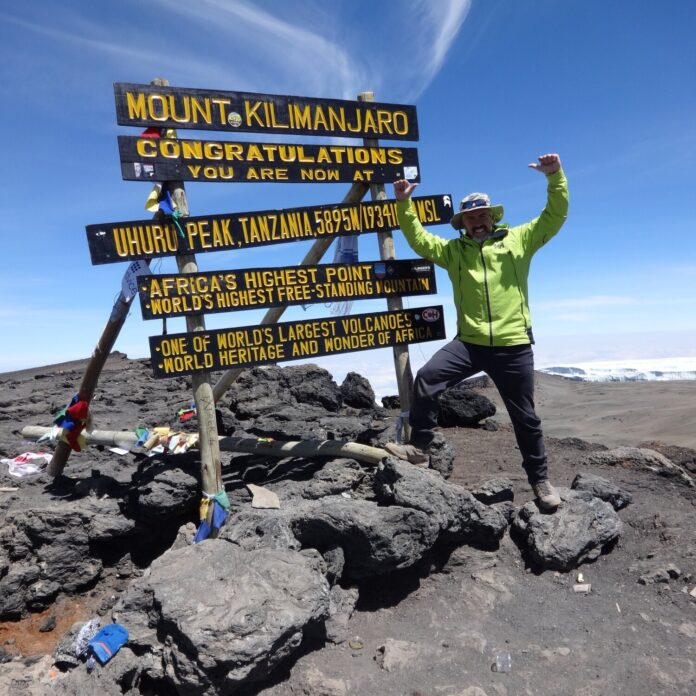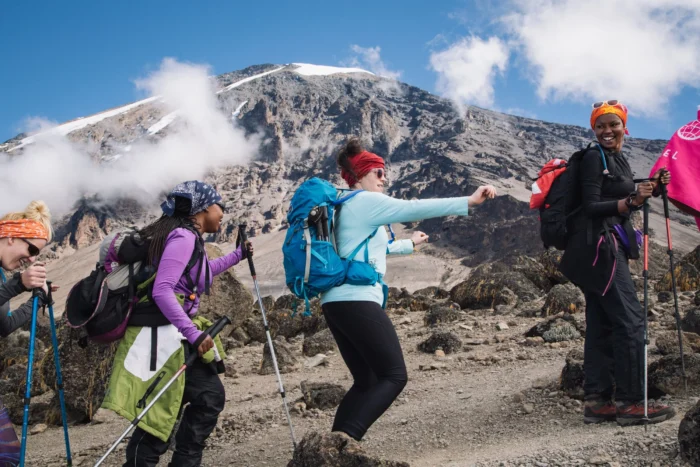
Are you ready to embark on the ultimate bucket-list adventure? To conquer the highest peak in Africa and stand atop the “Roof of Africa”? If you answered “yes,” then Kilimanjaro climbing could be the life-changing experience you’ve been dreaming of. Before you embark on this unforgettable journey, it’s essential to be prepared and well-informed. So, if Kilimanjaro climbing is on your radar, let’s dive head-first into everything you need to know before leaving for Tanzania.
What makes Kilimanjaro climbing so unique?
Well, for starters, Mount Kilimanjaro is no ordinary mountain. Towering at an incredible 19,341 feet above sea level, this dormant volcano is the highest peak in Africa and one of the Seven Summits – the highest mountains on each continent. Needless to say, Kilimanjaro climbing provides an unparalleled sense of accomplishment and unrivaled bragging rights.
But Kilimanjaro isn’t just about its height – it’s also famed for its extraordinary biodiversity. As you make your ascent, you’ll pass through five different climate zones, each offering its own unique flora and fauna. Picture yourself starting in lush rainforests, moving through moorland and alpine desert, and finally reaching the ice-capped summit. Where else in the world can you experience such diverse landscapes in just a matter of days? Honestly, it’s almost like hiking through several different continents in one go!
So, you might be thinking, “Kilimanjaro climbing sounds epic! But, is it for me?” The good news is that, unlike other high-altitude climbs, Kilimanjaro is considered a ‘walk-up’ mountain, meaning it requires no technical climbing skills. This makes it an accessible challenge for anyone with a reasonable level of fitness, determination, and adventure in their heart.
Choosing the right route for your Kilimanjaro climbing adventure

One of the most important decisions you’ll make when planning your Kilimanjaro climb is selecting the route that suits you best. There are seven established routes to choose from, each offering different levels of difficulty, scenic diversity, and success rates. Here’s a brief overview of some popular options:
- Marangu Route: Known as the “Coca-Cola Route,” Marangu is often considered the easiest and least expensive option. However, it has the lowest success rate, largely due to its shorter duration (5-6 days) and its ascent and descent on the same path.
- Machame Route: Dubbed the “Whiskey Route,” Machame is a more challenging and scenic alternative, offering a higher success rate and better altitude acclimatization, thanks to its “climb high, sleep low” approach.
- Lemosho Route: A longer and more remote option, Lemosho boasts spectacular scenery, fewer crowds, and a high success rate. It’s perfect for those with a bit more time to savor the Kilimanjaro climbing experience.
- Rongai Route: The only route that approaches the mountain from the north, Rongai is an excellent option for those who prefer a quieter and more gradual ascent, with a relatively high success rate.
Preparing for your Kilimanjaro climb: Physical, mental, and logistical aspects
Kilimanjaro climbing is undeniably demanding- after all, you’ll be hiking for several days at high altitudes. However, with proper preparation – both physically and mentally – you can certainly increase your chances of a successful summit.
- Physical preparation: Get in shape! Training for at least three months before the climb is crucial. Focus on cardiovascular exercises, strength training, and long hikes, preferably at high elevations or with a weighted backpack.
- Mental preparation: Your mindset plays a significant role in the success of your Kilimanjaro climbing adventure. Do your research, set realistic expectations, and stay positive throughout the journey!
- Logistical preparation: From booking a reputable tour operator to obtaining the necessary permits and visas, organizing your gear, and factoring in health-related considerations (e.g., vaccinations, altitude sickness prevention), there’s a lot to consider when planning your climb. Don’t underestimate the importance of being well-prepared and well-informed.
Finding your dream team: Picking the right travel companions

Climbing Mount Kilimanjaro is a journey meant to be shared, and the right travel companions can make all the difference. When crafting your dream team, consider the following:
- Compatibility: Climbing Kilimanjaro is both physically and mentally demanding. Ensure you surround yourself with people who share your level of fitness, determination, and motivation.
- Adventure styles: Are you a hardcore summit hunter? Or do you prefer to take in the surrounding beauty with a more laid-back approach? Kilimanjaro climbing can accommodate various adventure styles – just make sure your travel buddies are on the same page.
- Size matters: While bigger groups might help lower individual costs, larger numbers may also mean less flexibility, a slower pace, and less personalized attention from your guides. Striking the right balance is key.
Climbing in style: The art of packing for Kilimanjaro
When it comes to Kilimanjaro climbing, being prepared matters – especially when it comes to your gear. It’s all about striking the balance between packing light and having all the essentials. Here are some must-haves for a successful climb:
- Clothing: Layer up! Dressing in layers is the best way to adapt to the varying climate zones on the mountain. Your clothing arsenal should include thermal base layers, insulation layers (fleece or down jackets), and waterproof outer layers.
- Footwear: Invest in a good pair of hiking boots. Your feet will thank you! Make sure they’re waterproof, high-cut for ankle support, and well-broken-in before the climb.
- Accessories: Don’t forget the extras – gloves, sun protection, headwear, and high-quality hiking socks to keep you comfortable and safe during the climb.
- Gear: A durable backpack with essentials like a sleeping bag, headlamp, hydration system, and trekking poles will ensure you’re ready for anything Kilimanjaro throws at you.
- Snacks and supplements: High-calorie snacks and electrolyte supplements can give you the energy boost needed for those long, demanding days on the mountain.
Delving into local culture: Beyond the Kilimanjaro climbing experience
While the climb itself is the highlight of your adventure, surrounding yourself with local Tanzanian culture can make your experience even more meaningful. Here’s how you can immerse yourself in the rich customs and traditions of the region:
- Pre- or post-climb activities: Add extra days to your trip to explore nearby attractions. You can go on a safari at the Serengeti, spot wildlife in the Ngorongoro Crater, or relax on Zanzibar’s pristine beaches.
- Exchange stories with your guides and porters: Your Kilimanjaro climbing team is a wealth of knowledge and personal experiences. Don’t hesitate to ask questions, share stories, and learn from these incredible individuals who call the mountain their workplace.
- Support local businesses: From purchasing hand-made souvenirs to indulging in traditional Tanzanian cuisine, supporting local businesses allows you to give back to the community and gain an authentic glimpse into local life.
Leaving a positive footprint: Responsible Kilimanjaro climbing

We’ve all heard the saying, “Take only pictures, leave only footprints,” but it’s especially important to remember during your Kilimanjaro climbing adventure. Being a responsible climber means minimizing your environmental impact and supporting the welfare of porters and guides:
- Avoid plastic waste: Bring reusable water bottles and bags. Let’s keep Kilimanjaro pristine.
- Follow designated trails: Help protects the mountain’s delicate ecosystems by staying on marked paths and respecting designated campsite areas.
- Choose ethical operators: Opt for tour operators that are members of organizations like the Kilimanjaro Porters Assistance Project (KPAP), which ensures fair wages and working conditions for porters.
The Final Ascent: Conquering the Kilimanjaro Climbing Challenge
As we reach the end of our Kilimanjaro climbing adventure, it’s clear that this journey is about much more than just reaching the summit – it’s about embracing challenges, cultivating new friendships, and immersing yourself in another world. Climbing the “Roof of Africa” is the experience of a lifetime, and we hope these insights have encouraged, informed, and inspired you to take on this breathtaking journey. Go on, adventurers – the mountain is calling!
















